SWALLOWING
1/43
There's no tags or description
Looks like no tags are added yet.
Name | Mastery | Learn | Test | Matching | Spaced |
|---|
No study sessions yet.
44 Terms
what is another term for swallowing
deglutition
what is swallowing
swallowing is the action of:
preparing food within the oral cavity
transmitting the prepared bolus from the oral cavity through the pharynx and oesophagus to the stomach safely
how many times do we swallow in a 24h period and how many of those are associated with eating/ drinking
600-1000 (≈ 150 are associated with eating/ drinking - the rest are getting rid of saliva)
state the phases of swallowing
oral phase
oral preparatory phase
oral phase
pharyngeal phase
oesophageal phase
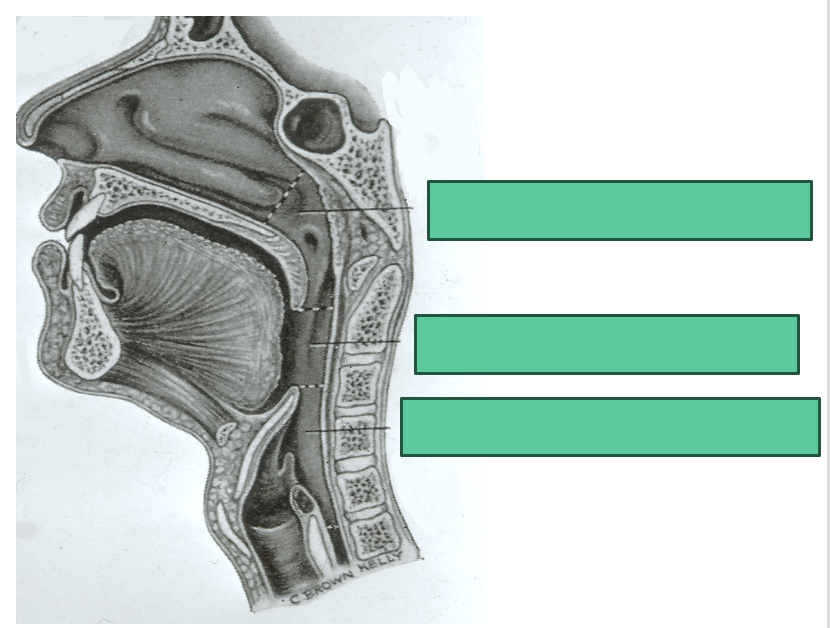
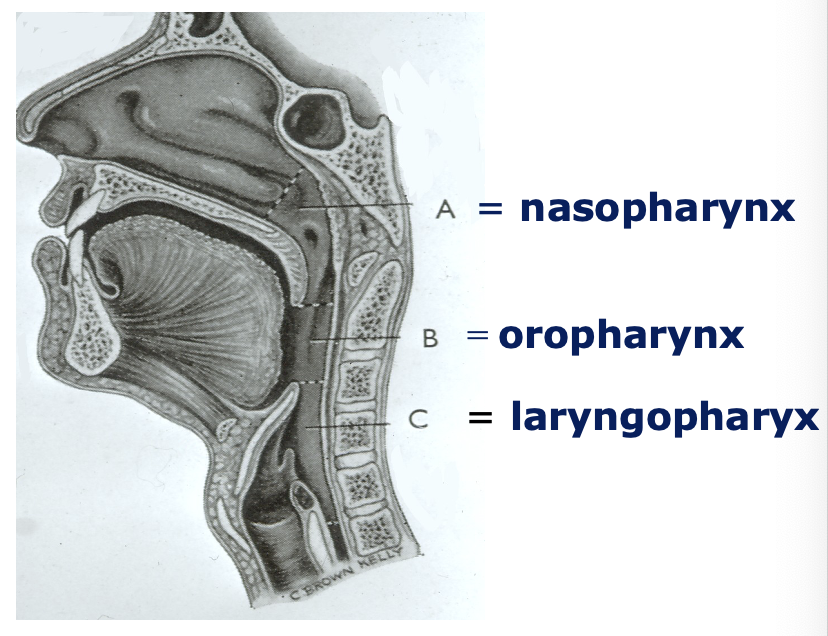
which phases of swallowing are voluntary and which are a reflex
the oral phase is voluntary - you can choose when to swallow
the pharyngeal and oesophageal phases are reflexes - once initiated it cannot be stopped
outline the oral preparatory phase
oral preparatory phase
preparation of food by mastication and mixing with saliva
consistency of food monitored by sensory receptors in oral mucosa
outline the oral phase process
moist chewed food is collected into a bolus mainly by the tongue working against the teeth and hard palate
the oral cavity is occluded by raising the tongue to the palate from front to back
this pushes the bolus towards the oesophagus
the back of the tongue is lowered to form a chute
food is then pushed into the oropharynx by a backward tongue thrust
—
» CN XII (hypoglossal nerve) provides the tongue’s motor innervation
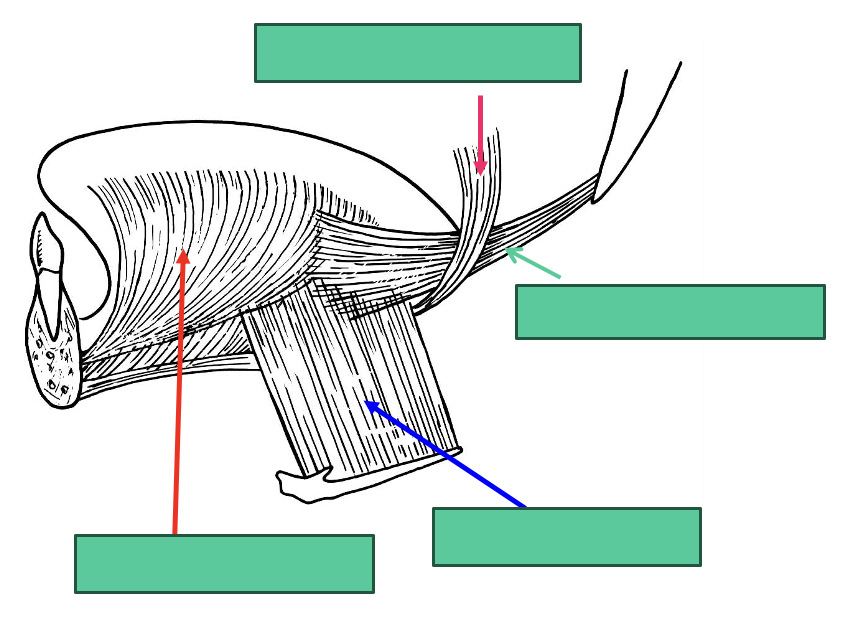
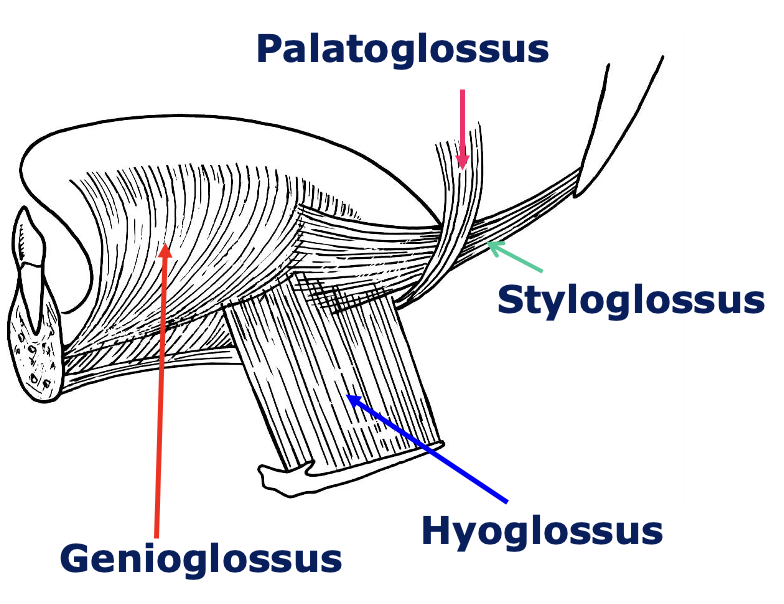
what is the innervation of the muscles of the tongue
all muscles of the tongue are provided motor innervation by CN XII (hypoglossal)
except the palatoglossus which is innervated by CN X
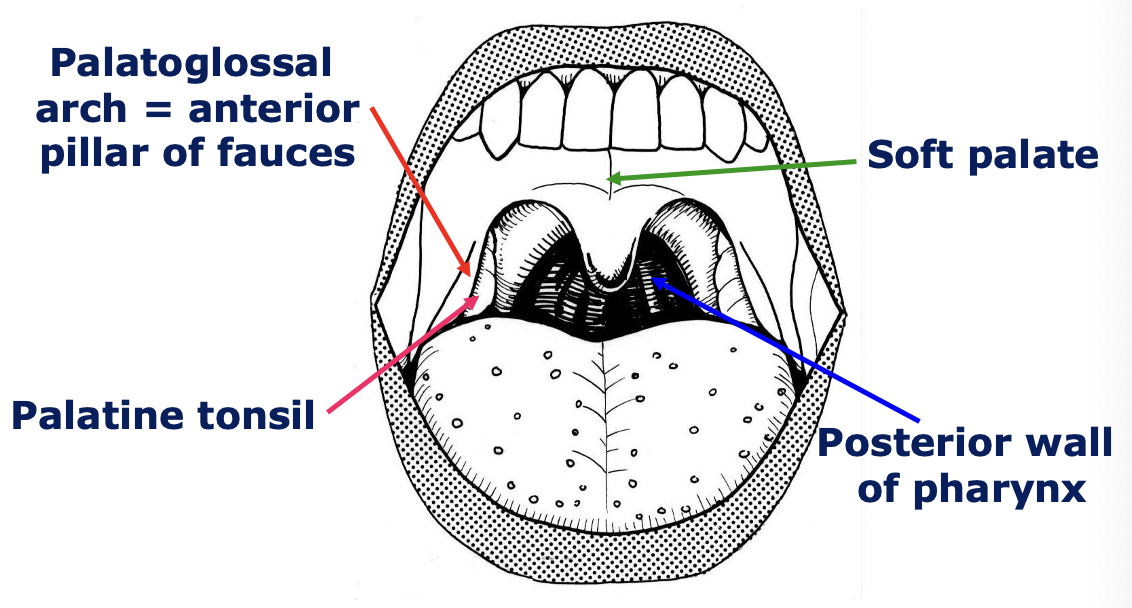
what are the trigger points and reflexes during the oral phase of swallowing
common trigger points:
palatoglossal arches/ anterior pillars of fauces
posterior pharyngeal wall
palatine tonsils
soft palate
bolus contact with trigger points initiates:
reflex pharyngeal contraction
reflex actions to protect the lower airway
which nerve mediates the sensory aspect of the gag/ pharyngeal reflex
CN IX (glossopharyngeal)
what requirement is usually necessary for the oral phase to be completed
the mouth must be closed - this elevates the mandible so the suprahyoid muscles can act on the hyoid bone much easier
it is difficult to swallow with the mouth open
what else occurs as food moves from the mouth to the pharynx
uncertainty as to when certain actions occur as food moves from mouth to pharynx:
elevation of soft palate (CN X) to stop food entering nasopharynx and nose
temporary suspension of respiration to minimise inhalation of food into larynx as it passes through the pharynx

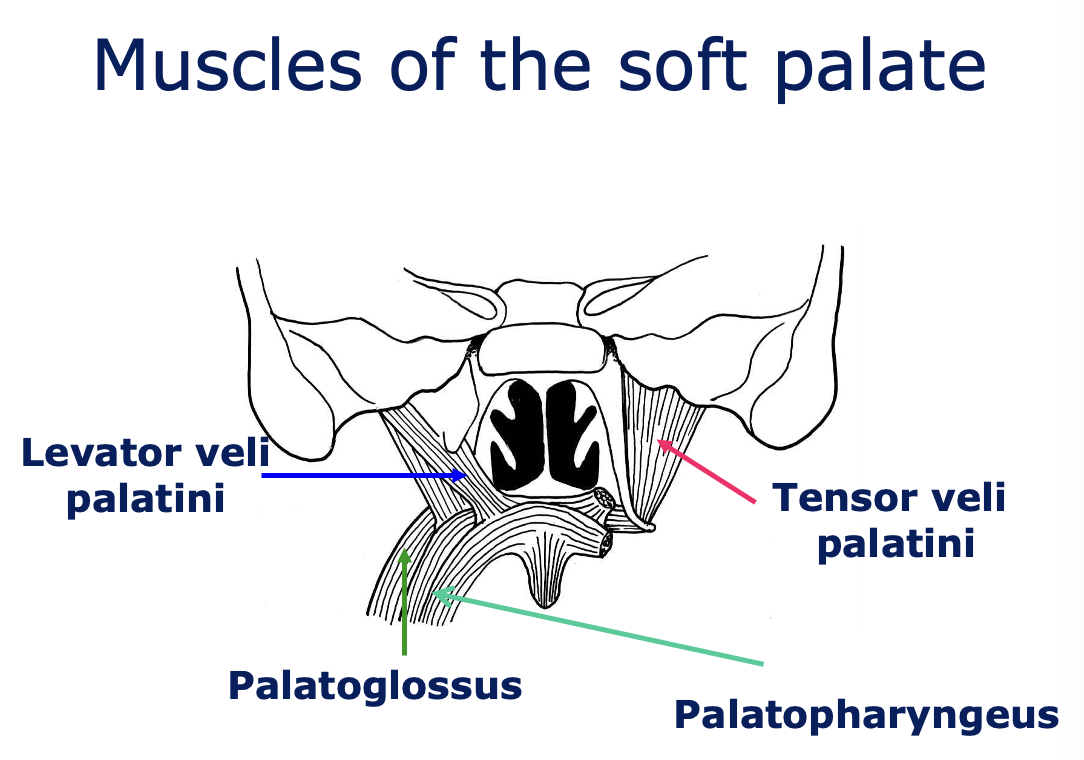
outline the main actions of the pharyngeal phase
passage of food through pharynx
protection of lower airway to prevent inhalation of food
passage of bolus by sequential contraction of three pairs of pharyngeal constrictor muscles - innervated by CN X except the stylopharyngeus (CN IX)
what is the lower region of the inferior pharyngeal constrictor muscle also known as
cricopharyngeus - attached to the cricoid cartilage
what is the upper region of the inferior pharyngeal constrictor muscle also known as
thyropharyngeus - attached to the thyroid cartilage
what occurs in the pharyngeal phase to protect the lower airway
suspension of respiration
elevation of larynx by suprahyoid muscles
narrowing of laryngeal entrance - cannot be closed off but can be narrowed by action of aryepiglottic muscles (weak)
strong adduction of vocal folds
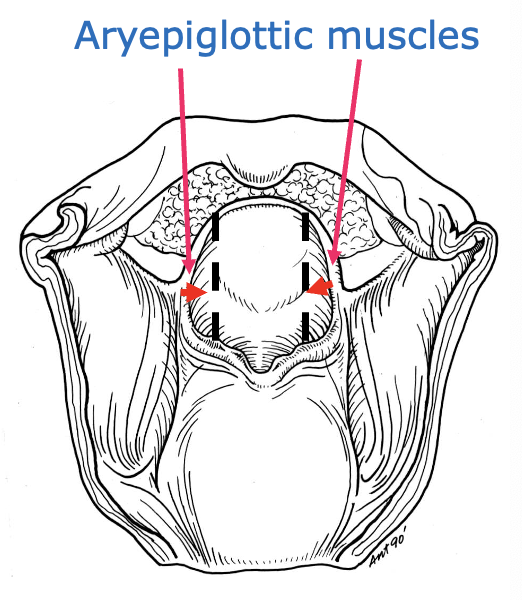
describe the process of laryngeal elevation during the pharyngeal phase of swallowing
suprahyoid muscles contract which pulls the hyoid bone upwards
the larynx is connected to the hyoid bone (via the thyrohyoid membrane) therefore the larynx is also elevated
the epiglottis flips backwards to cover the laryngeal entrance
epiglottis is convex anteriorly so food is directed laterally away from laryngeal entrance into pyriform recesses
which muscles adduct the vocal folds during the pharyngeal phase of swallowing
interarytenoids
lateral cricoarytenoids

describe the process of the pharyngeal phase
food passes through the pharynx by muscular action
deflected by epiglottis to bypass narrowed and elevated laryngeal entrance
respiration is suspended
rima glottis is closed to prevent anything that does enter the larynx from passing further
cough reflex if food does enter the larynx
which nerve stimulates the cough reflex
superior laryngeal branch of CN X
outline the oseophageal phase
food is passed down the oseophagus to the stomach by the action of the oesophageal muscles
how long does swallowing take, why is this?
swallowing takes 1.5-2s and needs to be this fast because respiration is suspended
what is the purpose of coughing
to expel mucus or foreign bodies from the respiratory system
what is the cough reflex initiated by
noxious stimulation of the pharynx, larynx or bronchial passageway - sensory limb of the CN X
what happens during the cough reflex
diaphragm and intercostal muscles contract
vocal folds adduct
glottis closes
expiratory muscle contracts
bronchi and non-cartilaginous portions of the trachea collapse
when does the gag reflex occur
if a swallowing reflex is elicited but the stimulating material cannot be swallowed
what occurs during the gag reflex
the mouth is opened and posterior part of the tongue is elevated in attempt to expel the material
at the same time the soft palate is elevated to stop material entering the nasopharynx
which nerves are involved in the sensory aspect of swallowing
CN V
sensory to mouth and lips
CN IX
sensory to pharynx
initiates reflex phases of swallowing
which nerves are involved in the motor aspect of swallowing
CN V3
muscles of mastication and suprahyoids
CN VII
muscles of facial expression (lips)
CN X
muscles of soft palate, pharynx and larynx
CN XII
muscles of tongue
what is dysphagia
any abnormality of swallowing
what are causes of dysphagia
obstructive
neurogenic
xerostomia
outline obstructive causes of dysphagia
space occupying lesions e.g. cancer
occlusion by enlargement of adjacent structures esp. oesophagus
can also be heart, great vessels, bronchi
outline neurogenic causes of dysphagia
interference with neuromuscular mechanisms of swallowing by neuromuscular disease e.g. stroke, Parkinson’s, motor neurone disease
can cause direct damage to cranial nerves
can cause damage to control centres of swallowing (stroke)
outline effects of neurogenic dysphagia
swallowing is slow and difficult
phases become uncoupled so there may be poor transit - can lead to food pooling
food pooling increases the chances of aspiration
outline xerostomic causes of dysphagia
can be due to radiotherapy, medications, other conditions like Sjogren’s
consistency of saliva is also important - not just quantity
how is swallowing controlled
swallowing centres in brainstem coordinate the actions of cranial nerves and respiration
higher centres in insular cortex - some evidence of lateralisation
what problems are caused by dysphagia
malnutrition
social problems
aspiration of food or drink into lower respiratory tract
what happens if food enters the (normal) larynx
superior laryngeal nerve (CN X) elicits cough reflex
outline silent aspiration
if the laryngeal mechanism is compromised (no sensation/ muscle weakness) food may be inhaled without a cough reflex
this is silent aspiration
—
foodstuff enters the bronchial tree and stagnates
it may become infected - infection is more likely if food is carrying bacteria from a mouth with poor oral hygiene
this can lead to pneumonia and death
how is swallowing clinically tested
bedside test:
take sips of water - assess timing of swallow, size of sip
assess to see if the patient stops drinking, cough, choke or have a “wet voice”
wet voice = fluid build up on vocal folds - indicates aspiration
what techniques can be used to assess swallowing
fiber-optic endoscopic evaluation of swallowing (FEES)
video fluoroscopy (VFS) - specialised type of radiograph